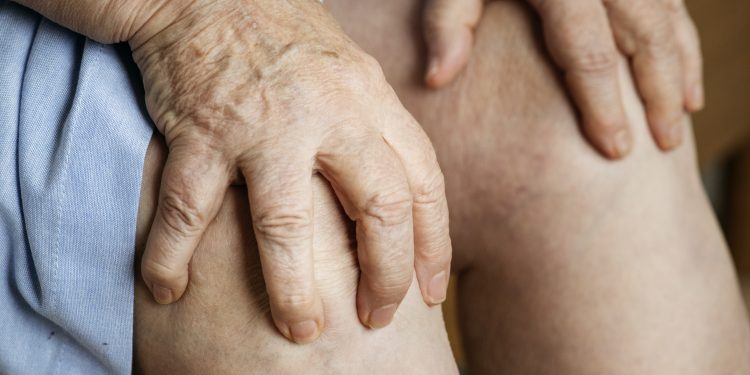Introduction
Gout, commonly referred to as the “Disease of Kings,” is a form of arthritis (joint inflammation that causes pain and stiffness in one or more joints, which can get worse with age). That comes on suddenly and severely, causing pain, redness, and inflammation in your joints. Imagine having an ankle that feels like it’s on fire or a toe that’s so big it won’t even fit in your favorite shoe. Gout, which can affect any joint in your body and is a prevalent ailment that affects millions of people worldwide, doesn’t just impact your toes and ankles.
In this post, we’ll talk about the symptoms of gout pain, the causes, and triggers of gout, as well as many gout management and treatment choices. However, don’t worry, we won’t be all gloom and doom; we’ll make sure to sprinkle in some humor and fun along the way!
Signs and Symptoms of Gout Pain
Gout pain can have a variety of symptoms, but the most common ones include the following:
- abrupt intense pain
- redness
- inflammation in the affected joint.
The big toe is the most often afflicted joint, but gout can also affect the ankle, knee, and elbow. Think about trying to move your fingers when they feel like they are enclosed in concrete or walking on a leg that feels like it is made of glass. Fever, chills, and general malaise are some other signs of gout. These symptoms are like those of the flu without the pleasure of spending the day in bed.
Causes/Triggers of Gout Pain
The accumulation of uric acid is what causes gout (the product of the breakdown of purine-containing compounds). Purines, which can be found in a variety of meals and beverages, are broken down to form the waste product uric acid. The following are the known and common causes and triggers of gout pain:
- Alcohol intake
- A diet heavy in purines
- Obesity
- Hypertension
- Kidney disease
- Higher use of specific drugs.
But don’t worry, you don’t have to stop eating all your favorite things but remember to do this in moderation.
Treatment/Management of Gout Pain
Gout pain doesn’t really have a treatment plan or method, but it mainly focuses on symptom management and attack prevention.
- Like taking a miracle pill to cure your joint pain
- Taking non-steroidal anti-inflammatory drugs (NSAIDs). Like Ibuprofen and Naproxen can be used to lessen pain and inflammation.
- Another drug that can be used to lessen the frequency and severity of gout attacks is colchicine.
- In addition, gout attacks can be avoided by making lifestyle adjustments like losing weight, quitting drinking, and eating a low-purine diet.
In other words, you should probably stop drinking beer, start working out, and eat more fruits and vegetables if you want to prevent gout.
Complications of Gout Pain
If gout is left untreated, it can cause several complications, including:
- Recurrent gout episodes: If the condition is not effectively controlled, gout attacks can intensify and stay longer.
- Tophi: Uric acid crystals can also form lumps under the skin, commonly in the elbows, ears, fingers, toes, and toes. In addition to being ugly, tophi can hurt the joints and harm them.
- Kidney stones: High uric acid levels in the body can also cause kidney stones to form.
- Damage to the kidneys: High blood levels of uric acid over time can also harm the kidneys.
Repeated gout attacks can harm the affected joints permanently, resulting in chronic discomfort, stiffness, and a loss of mobility.
Conclusion
Millions of individuals throughout the world suffer from the prevalent disease gout. Alcohol consumption, a high-purine diet, being overweight, having high blood pressure, having kidney disease, and using specific drugs are all common causes of gout discomfort. Gout is often treated with NSAIDs (Non-Steroidal Anti-Inflammatory Drugs), colchicine, and dietary adjustments to control the symptoms and avoid further attacks. But bear in mind that gout doesn’t have to be a permanent condition; with the correct care and lifestyle adjustments, you can prevent gout. If you meet gout symptoms, it’s critical to seek medical assistance and consult with a healthcare provider to create a personalized treatment plan.
To manage any ailment, including gout, be it yours or a family member’s or a friend, always bear in mind that a little humor for the person or for you and optimism can help a lot.
Finally, even though gout may feel like a pain in the toe (literally), you can manage it by finding the correct medical management and making lifestyle modifications. If everything else fails, adopt a cheerful outlook and consider all the humorous jokes you can talk about your swollen toe. The discomfort will be a little bit more tolerable; I assure you.
Bear in mind that you have power over your gout and that it need not rule your life. Always keep in mind Hippocrates’ sage advice to “first, do no damage” if you’re ever in doubt. Your joints will reward you for taking care of yourself.









Discussion about this post